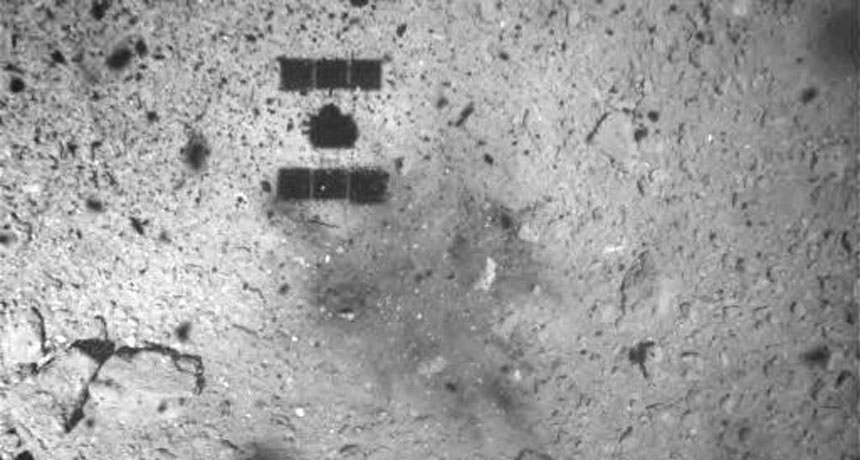Ryugu is probably a chip off one of these two other asteroids
Japan’s Hayabusa2 team has narrowed down the asteroid’s origins based on its color

CASTING A LONG SHADOW The Japanese Hayabusa2 spacecraft (whose shadow is visible at the top of the image) took this picture of the asteroid Ryugu on February 22 about one minute after touching down on its surface and then lifting off again.
JAXA, Univ. of Tokyo, Kochi Univ., Rikkyo Univ., Nagoya Univ., Chiba Inst. of Technology, Meiji Univ., Univ. of Aizu, AIST







